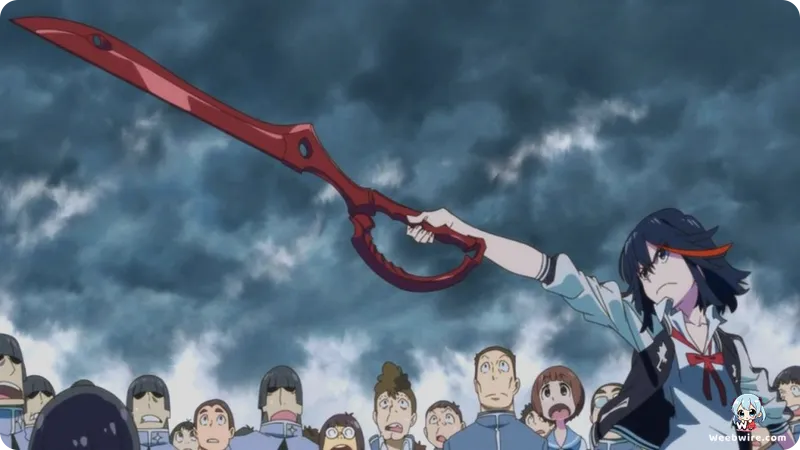Hidden Depths in the Epilogue: Why Kill la Kill's 'GOODBYE AGAIN' OVA is Essential Viewing for Fans

Studio TRIGGER’s initial major success, Kill la Kill, concluded its main series with a spectacular, universe-altering finale. However, the true, definitive conclusion for Ryūko Matoi, Mako Mankanshoku, and the memorable supporting cast arrived in the form of the highly regarded original video animation (OVA), Episode 25. Titled “Kill la Kill: GOODBYE AGAIN,” this episode premiered in September 2014. It functions as an extended, detailed epilogue, offering a vibrant, character-focused narrative detailing life after the world has been saved. Far from being a minor footnote, “GOODBYE AGAIN” is an essential component of the franchise, showcasing the commitment of creative leaders, director Hiroyuki Imaishi and writer Kazuki Nakashima, to providing genuine, high-energy closure.
The OVA’s title itself is a masterful use of dramatic irony. While “GOODBYE AGAIN” suggests a definitive, emotional farewell, the episode’s content shifts entirely toward boisterous new beginnings and the humorous, often jarring, adjustment back to routine high school life. The central narrative tension is cleverly derived from the complete absence of high-stakes danger. After defeating cosmic threats and battling sentient alien clothing, the protagonists, particularly the hyper-energetic Mako Mankanshoku, find themselves completely overwhelmed by the sheer boredom of standard academics. This narrative choice serves as brilliant meta-commentary on established shonen and action genre conventions, highlighting the peculiar reality that heroes often struggle more with the mundane task of a pop quiz than with a final boss confrontation. The OVA expertly captures the absurdity of having secured global peace only to worry about standard, Life Fiber-free school uniforms.
Mako Mankanshoku: The Emotional Anchor
Crucially, the episode provides an unexpected and vital character study for Mako. Although she typically functions as the series’ primary source of comedy, Mako grounds the emotional depth of this epilogue. Imaishi’s signature highly expressive, over-the-top animation style is utilized to its maximum potential as Mako confronts a profound sense of post-climactic emptiness, a psychological state rarely explored within such a frenetic action series. Her frantic struggle to find purpose in a world devoid of constant peril is a source of comedic brilliance, yet it simultaneously reveals a surprising layer of emotional complexity, confirming that Mako thrives equally on chaos and deep friendship.

A fascinating production detail reveals that Mako’s movements and expressions were intentionally drawn with fewer restrictions compared to Ryūko’s. This decision granted animators maximum creative freedom for impeccable comedic timing, a principle fully realized throughout this OVA.
Further compelling details reside in the subtle visual and auditory acknowledgments of Ryūko Matoi’s past. Although Ryūko is actively adapting to life without Senketsu, the vital, sentient uniform, the episode incorporates visual and audio cues confirming his spiritual influence. One of the most poignant, and easily overlooked, production facts involves a brief, non-verbal cameo: Toshihiko Seki, Senketsu's original voice actor, provides background murmurs or minor character voices during emotionally significant moments. This deliberate choice by the sound design team offered a sophisticated tribute, acknowledging the uniform's enduring spiritual impact on Ryūko without requiring a physical return. This serves as a subtle yet powerful nod to dedicated viewers. Visually, Ryūko's civilian attire maintains the sharp, angular aesthetic reminiscent of her former battle uniform, symbolizing that her identity as a hardened warrior is now intrinsically internalized rather than externally displayed. The OVA is an indispensable final piece, celebrating the deep friendships forged under fire and cementing the spirit of controlled chaos that defines Studio TRIGGER’s celebrated legacy.
Credits
Kill la Kill
Author
Kazuki Nakashima
Cover Art
Sushio
Studio
TRIGGER
Publisher
Aniplex
Producers





